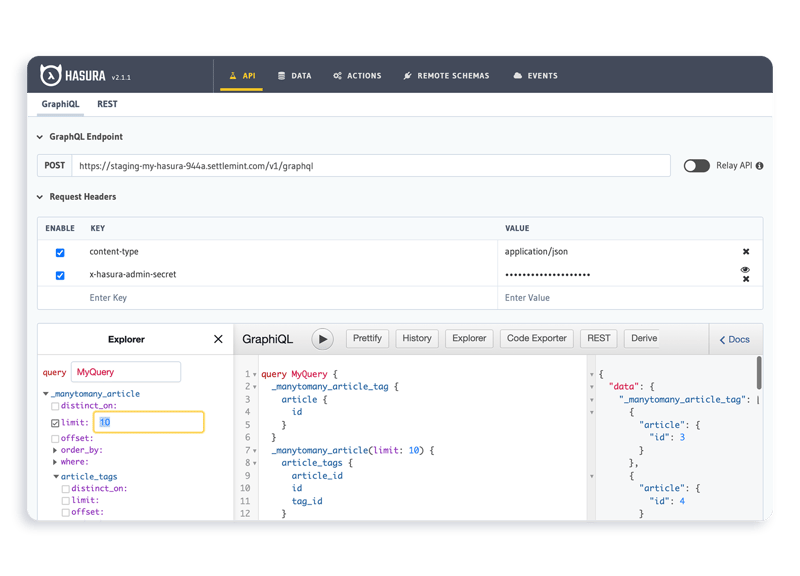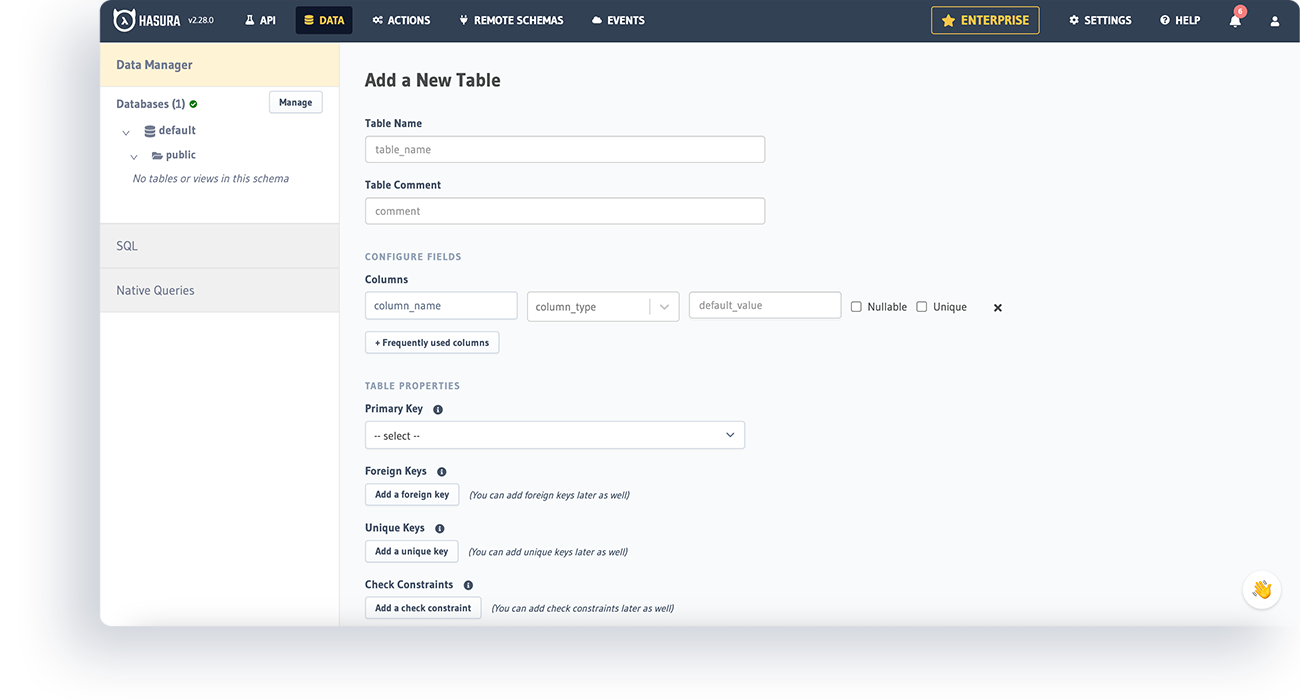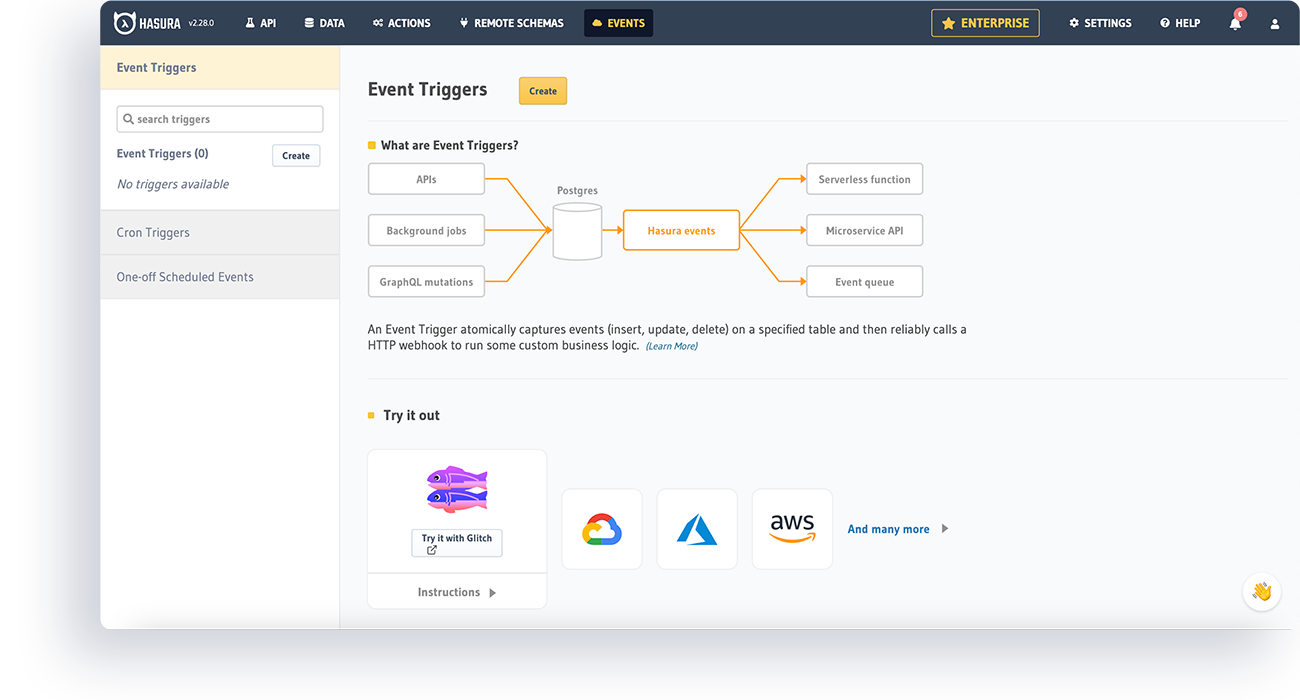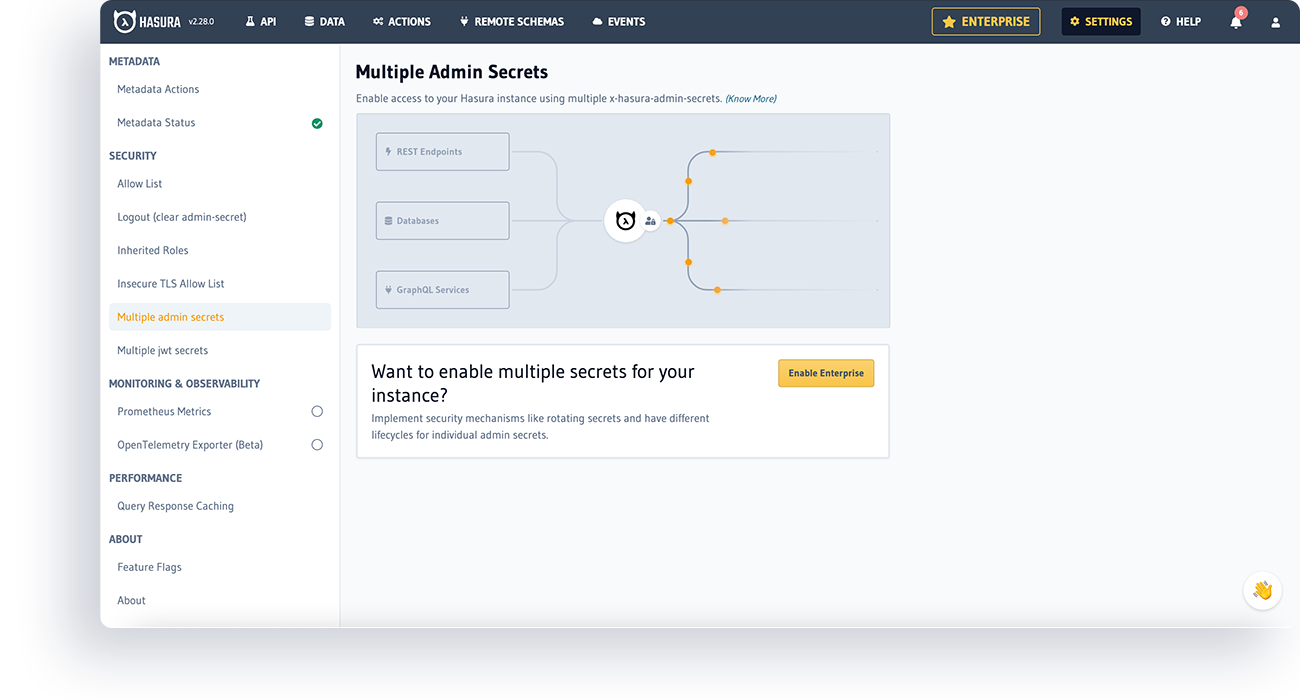Integrate On And Off-Chain Data
Connect securely to both legacy and Web3 databases then manage data flexibly and efficiently
What is the Hasura Engine?
The Hasura Engine is SettleMint’s solution for interacting with off-chain databases and integrating them into your blockchain applications, with built-in authentication and authorization features to ensure data security.

Using Hasura, developers can connect their applications to data sources including traditional databases, APIs and blockchain networks, resulting in flexible and efficient data management across different layers of the Web3 technology stack.
An integrated Hasura instance is available within the SettleMint platform, so developers can interact with any smart contract within their workspace, which eliminates the need to connect and synchronize on-chain and off-chain environments.
Unified data access
GraphQL API gateway
Cron jobs and scheduled tasks
Security and access control
Unified data access
A unified API layer that enables data to be accessed from traditional and on-chain databases through a single GraphQL interface, eliminating the need to handle different data access protocols.
GraphQL API gateway
Hasura acts as a GraphQL API gateway for Web3 applications, facilitating connectivity with decentralized networks and protocols.
By providing a standardized GraphQL interface, it simplifies the complexity of Web3 integrations.
Cron jobs and scheduled tasks
Built-in support that allows developers to automate repetitive tasks and schedule actions at intervals.
Developers can perform periodic data updates, trigger smart contract functions or execute background processes on a predetermined schedule.
Security and access control
Robust security features and fine-grained access control mechanisms allows developers to define granular access rules based on roles and permissions.
This protects sensitive data, prevents unauthorized access and secures on-chain interactions.
Why integrating and managing databases in blockchain applications can be difficult
Many blockchain applications need more than just decentralized tools to build an end-to-end solution. For example, they might need to save KYC information or store metadata related to NFTs and smart contracts that aren’t suitable for decentralized solutions like IPFS.
Accessing off-chain and on-chain databases requires different integration approaches, which can result in developers having to manually synchronize and reconcile data between these sources.
They can directly connect to Web2 databases or use blockchain APIs and handle data synchronization through custom scripts or processes. However, all of this work means they have to invest significant time and effort to build and maintain the integration logic.
- Bridging on-chain and off-chain data may be needed
- Different integration approaches are required
- Custom scripts and processes must be used
- This takes time and resources to build and maintain
How Hasura Engine makes integrating and managing data sources easy

The Hasura Engine provides a unified data access layer that enables developers to seamlessly integrate data from any off-chain or on-chain databases they need for their blockchain application.
They can connect and query data from traditional databases and blockchain networks using a single GraphQL interface. Hasura’s powerful schema stitching capability simplifies the data management process by enabling them to automatically integrate disparate data sources.
Furthermore, the Hasura Engine allows them to define custom resolvers and data pipelines to handle the integration and synchronization of data, enables automatic updates and synchronization of data, ensures data consistency and eliminates manual reconciliation.



